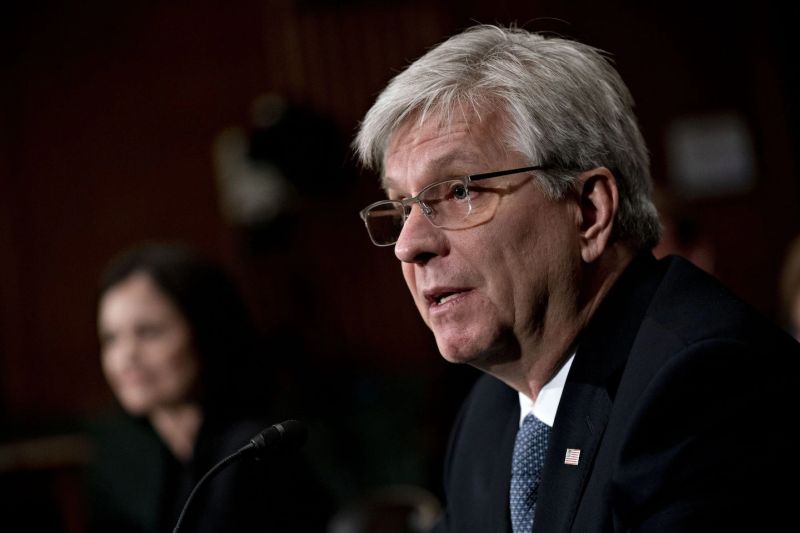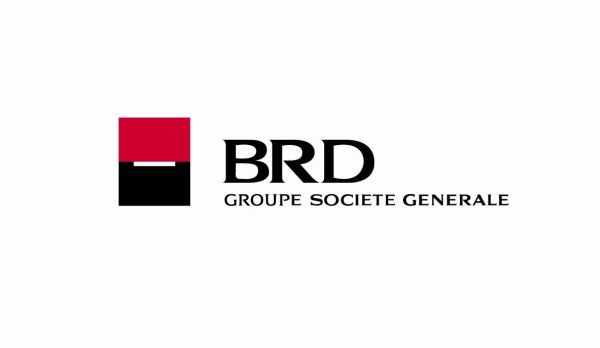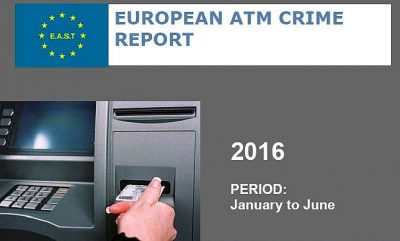Governor Christopher J. Waller
Relative to the Federal Open Market Committee’s (FOMC) economic objectives, data for the first quarter indicate that economic output and employment are continuing to grow at a solid pace while inflation remains much too high. The FOMC raised its target range for the federal funds rate to 4-3/4 to 5 percent at its March meeting, and our statement noted that recent banking developments are likely to result in tighter credit conditions and to weigh on economic activity, hiring, and inflation. We didn’t know then, and still don’t know, the extent of these possible effects. So, perhaps even more closely than usual, I will be watching the data to evaluate the appropriate path of monetary policy.
The sudden failure of Silicon Valley Bank (SVB) and Signature Bank, which contributed to stresses felt by other mid-size banks, was a classic bank run, in which the rapid withdrawal of funds by depositors created severe liquidity problems. SVB was a specialty bank serving the tech sector. Unlike other banks, where a substantial share of deposits is insured and verifiably safe, more than 90 percent of SVB’s deposits were above the $250,000-per-account limit for deposit insurance. Additionally, those deposits were largely from many of the same types of businesses, resulting in additional risk. Chair Powell has directed Vice Chair for Supervision Barr to report by May 1 on SVB’s failure, including the Federal Reserve’s supervision and regulation of the bank. Based on what is already in the public record, SVB seems to have done a terrible job managing its risks.
A bank run that undermines confidence in other banks is the most fundamental risk to the financial system, and the Fed, serving as the lender of last resort, was created in part to prevent such a development. The job of the lender of last resort is to provide sufficient funds to the banking system so that depositors can be confident they will be able to withdraw their funds on demand. If depositors are confident that they will be able to withdraw their funds, then a bank run will stop or never start in the first place. Last month, that confidence was fractured when the failures of SVB and Signature Bank raised the possibility that uninsured depositors could take significant losses. As fear of taking those losses spread to uninsured depositors at healthy institutions, it became imperative for the Federal Reserve, along with other regulators, to act.
The Fed’s long-time liquidity tool is the discount window, by which banks can post collateral, priced at market value, and obtain loans for up to 90 days. On March 12, the Fed created an additional lending tool, with the approval of the Secretary of the Treasury, called the Bank Term Funding Program (BTFP), which accepts U.S. government securities collateral at par value with no haircuts for loans with maturities up to a year. To date, both tools are working well at providing needed liquidity to help banks deal with deposit outflows. In addition, the Board, the Federal Deposit Insurance Corporation, and the Treasury Department announced the use of the systemic risk exception with respect to both SVB and Signature Bank to fully protect all depositors. I voted for these actions, not because SVB and Signature are systemically important on their own, but to stem the emerging crisis of confidence which could have led to additional bank runs with significant adverse effects on financial markets and the broader economy.
The BTFP and discount window appear to have been successful in providing stability to the banking system. In the past few weeks, we have seen deposit flows stabilize across banks and, as a result, the combined usage of the discount window and the new program has moderated. Both tools remain ready and able to provide liquidity, enabling banks to support households and businesses.
This success allowed us to focus on our macroeconomic objectives of price stability and maximum employment when setting the policy rate at our March FOMC meeting. Against this backdrop, the FOMC raised the policy rate 25 basis points without causing significant stress to the financial system. To date, that decision has been validated.
That said, it is unclear to what extent the stress in the banking system will weigh on economic activity. If banks feel they need to adjust their business models or are uncertain about the stability of their deposit base or the momentum of the economy, they may tighten credit conditions and curtail lending. Tighter financial conditions or other lending conditions would likely cause households to reduce spending and businesses to pull back on investment and hiring, all of which will help move supply and demand back into better balance and help bring inflation down toward our 2 percent target.
It is important to note that there were indications of tightening credit conditions this year before the problems emerged in the banking system. In the Board’s January senior loan officer opinion survey, bank officials reported higher interest rates for loans and tighter lending standards, relative to the end of last year.2 These loan officers also said they expected to continue tightening lending standards over the course of 2023. They cited an expected deterioration in collateral value, a reduction in risk tolerance, and a deterioration in the credit quality of bank portfolios, which mirror the factors that contributed to the recent turmoil in banking. The failure of SVB and Signature Bank and related developments might have solidified and pulled forward factors that were already working to tighten lending conditions, or it may be that credit conditions will now be even tighter than they were on track to be.
I say this because, all else equal, a significant tightening of credit conditions could obviate the need for some additional monetary policy tightening, but making such a judgement is difficult, especially in real time.3
Regarding the economic outlook, the data in hand for the first quarter of 2023 continue to surprise me, with stronger growth and job creation than I expected late last year. The FOMC has significantly raised the target range for the federal funds rate to dampen aggregate demand, but U.S. consumers and businesses are showing remarkable resilience. The Atlanta Fed’s gross domestic product (GDP) growth tracker, which reflects the most up-to-date data, estimates that gross domestic product grew by 2.2 percent in the first quarter, in line with many private sector estimates and higher than most estimates of potential growth provided by FOMC participants. This growth would mean that, so far, tighter monetary policy and credit conditions are not doing much to restrain aggregate demand.
Some data for March point to moderation in economic activity. The Institute for Supply Management’s (ISM) survey of purchasing managers indicated that manufacturing contracted in March, and the ISM’s survey related to non-manufacturing indicated that activity outside the manufacturing sector decelerated in March to a modest pace. Just a few minutes ago data on retail sales for March was released, which will give us some idea of how consumer demand is holding up. For this and other sectors of the economy, I believe that demand will moderate because of higher interest rates.
The solid performance of the economy through the first quarter in part reflects the tight labor market. The jobs report for March showed, once again, that we have a strong labor market, with 236,000 jobs created and the unemployment rate falling to 3.5 percent. While still showing strong signs of growth, job creation did cool a bit from the hot readings we got in January and February. And we did get some encouraging news that the labor market is rebalancing. First, the labor participation rate increased for the fourth month in a row, so labor supply is slowly increasing. Second, the report on February job openings showed that job vacancies fell 632,000 to 9.9 million and the vacancy rate declined to 6 percent. Job vacancies have fallen 14 percent since the peak in March 2022. The job openings data along with the jobs report show that labor demand has been falling, which is more evident in declining vacancies than in rising layoffs. So as the labor market continues to rebalance this should help bring inflation down by reducing wage pressures.
Now, let’s talk about what these developments mean for inflation. Inflation moderated in the second half of 2022, but that progress more or less stalled toward the end of the year, and inflation remains far above the FOMC’s target of 2 percent. On April 12, we got consumer price index (CPI) inflation data for March, and it was another month of mixed news. Overall CPI inflation rose very little with only a 0.05 percent increase from the previous month, due to sharp declines in food and energy prices, with the year over year increase falling to 5 percent. Core inflation, which strips out food and energy prices, is a good guide to future inflation, and that measure came in at around 0.4 percent in March, which translates to an annual rate of 4.6 percent if it were to persist. It was the fourth month in a row with core inflation at 0.4 percent or higher. Since December of 2021, core inflation has basically moved sideways with no apparent downward movement. So, despite some encouraging news on a slowing in housing costs, core inflation does not show much improvement and remains far above our 2 percent inflation target.
Whether you measure inflation using the CPI or the Fed’s preferred measure of personal consumption expenditures, it is still much too high and so my job is not done. I interpret these data as indicating that we haven’t made much progress on our inflation goal, which leaves me at about the same place on the economic outlook that I was at the last FOMC meeting, and on the same path for monetary policy. Because financial conditions have not significantly tightened, the labor market continues to be strong and quite tight, and inflation is far above target, so monetary policy needs to be tightened further. How much further will depend on incoming data on inflation, the real economy, and the extent of tightening credit conditions.
Another implication from my outlook and the slow progress lately is that, as of now, monetary policy will need to remain tight for a substantial period of time, and longer than markets anticipate. But there are still more than two weeks until the next FOMC meeting, and I stand ready to adjust my stance based on what we learn about the economy, including about lending conditions. Other data such as those on the housing sector, personal income, and surveys that provide managers’ views of economic conditions in April will come in over the next few weeks. I would welcome signs of moderating demand, but until they appear and I see inflation moving meaningfully and persistently down toward our 2 percent target, I believe there is still work to do.
Thank you, Kathy, and I’m happy to take a few questions.
1. The views expressed here are my own and not necessarily those of my colleagues on the Federal Reserve Board or the Federal Open Market Committee. Return to text
2. One can find the Senior Loan Officer Opinion Survey on Bank Lending Practices at the following link. https://www.federalreserve.gov/data/sloos.htm. Return to text
3. For a given level of tightening in various financial market data, estimates of the equivalence in tightening of the policy rate vary widely, and, as the shift in financial conditions since early March showed, financial conditions themselves are a moving target. Return to text






COMMENTS